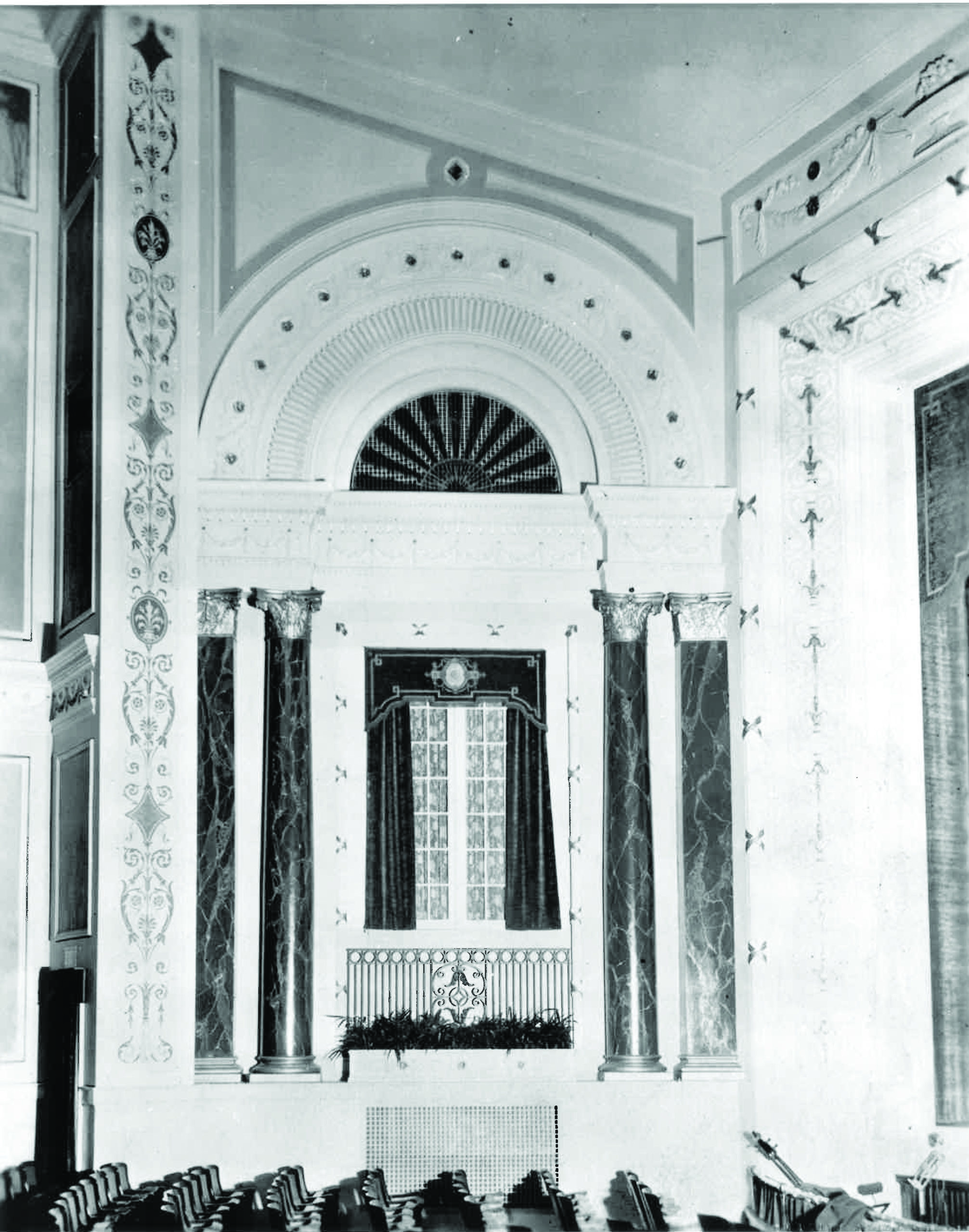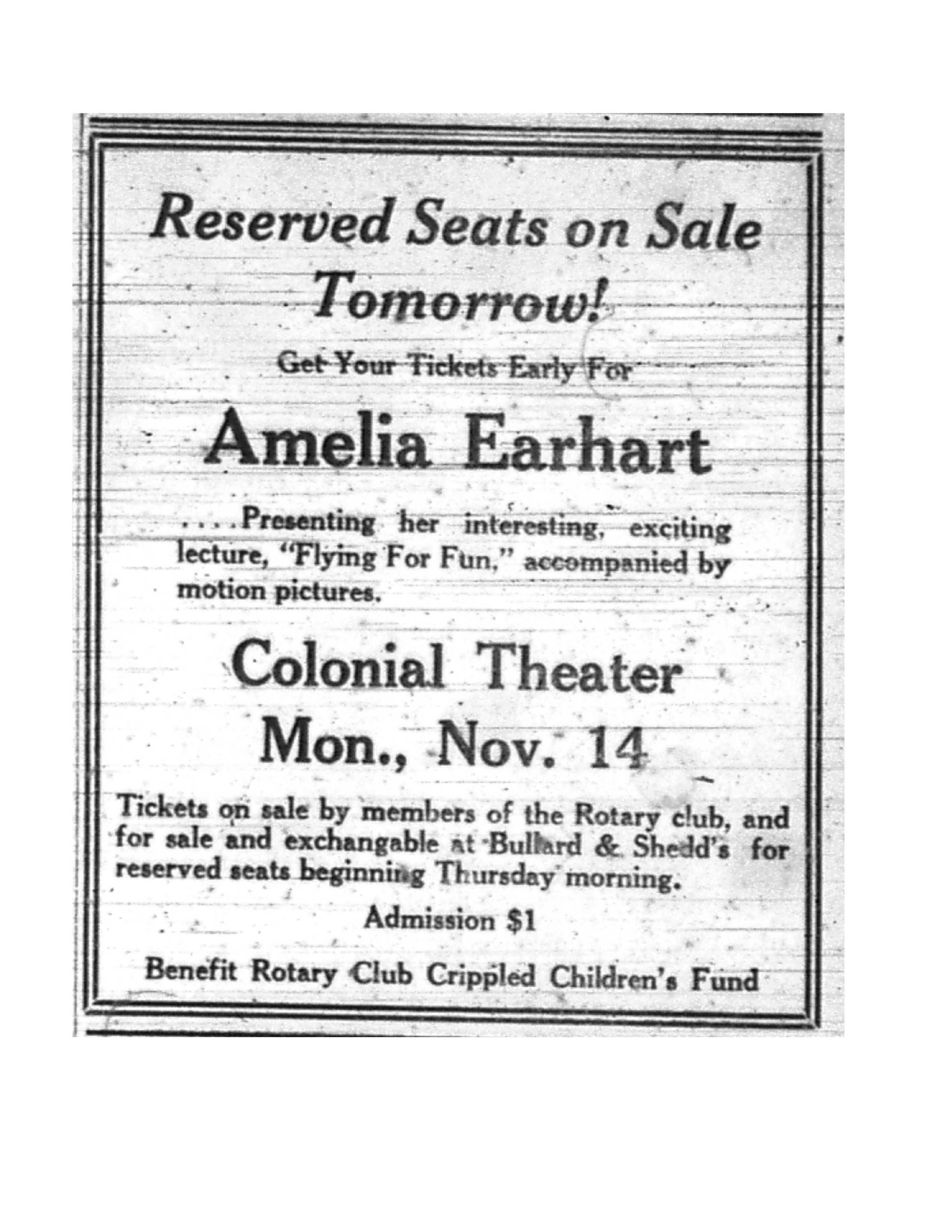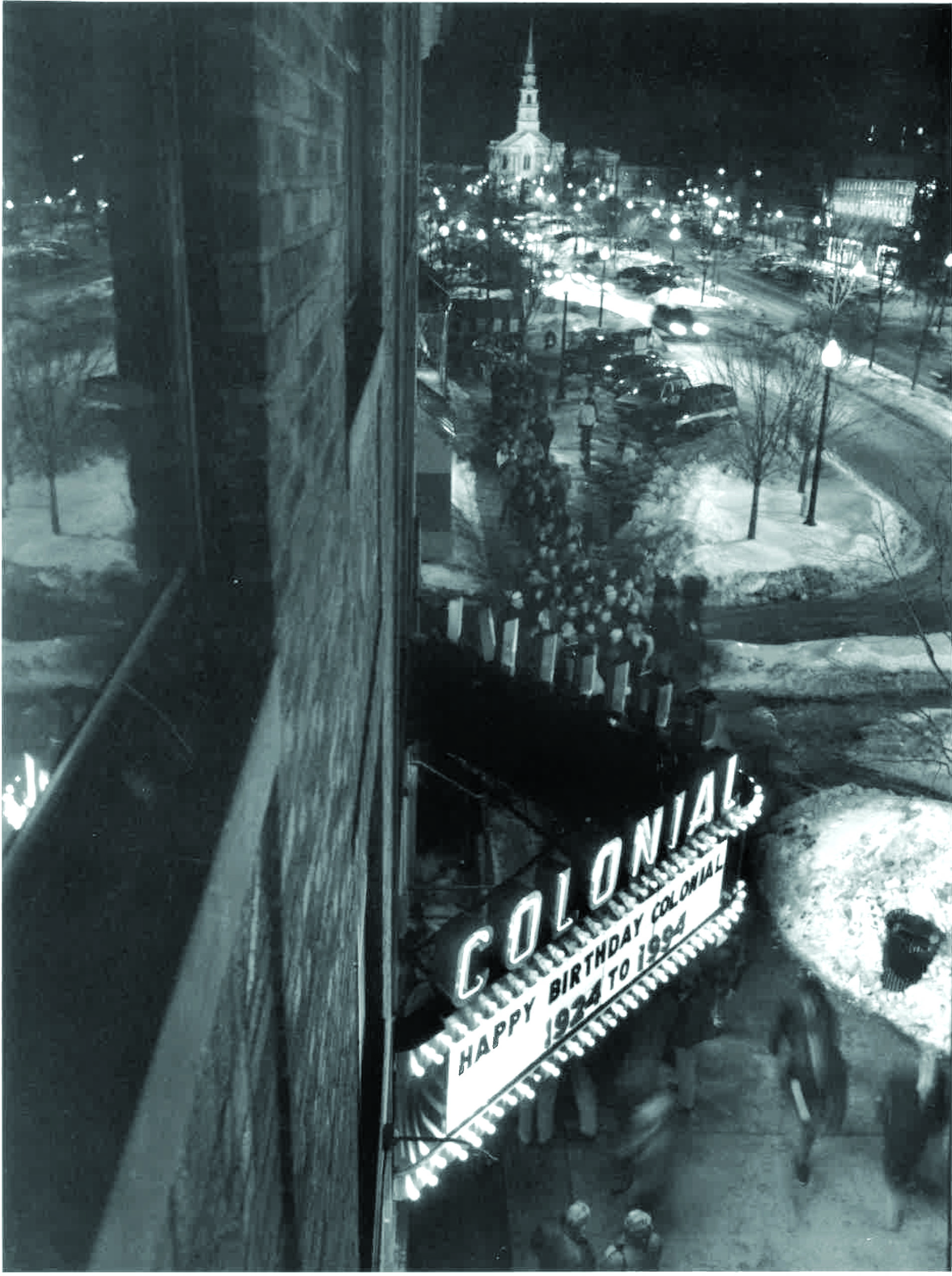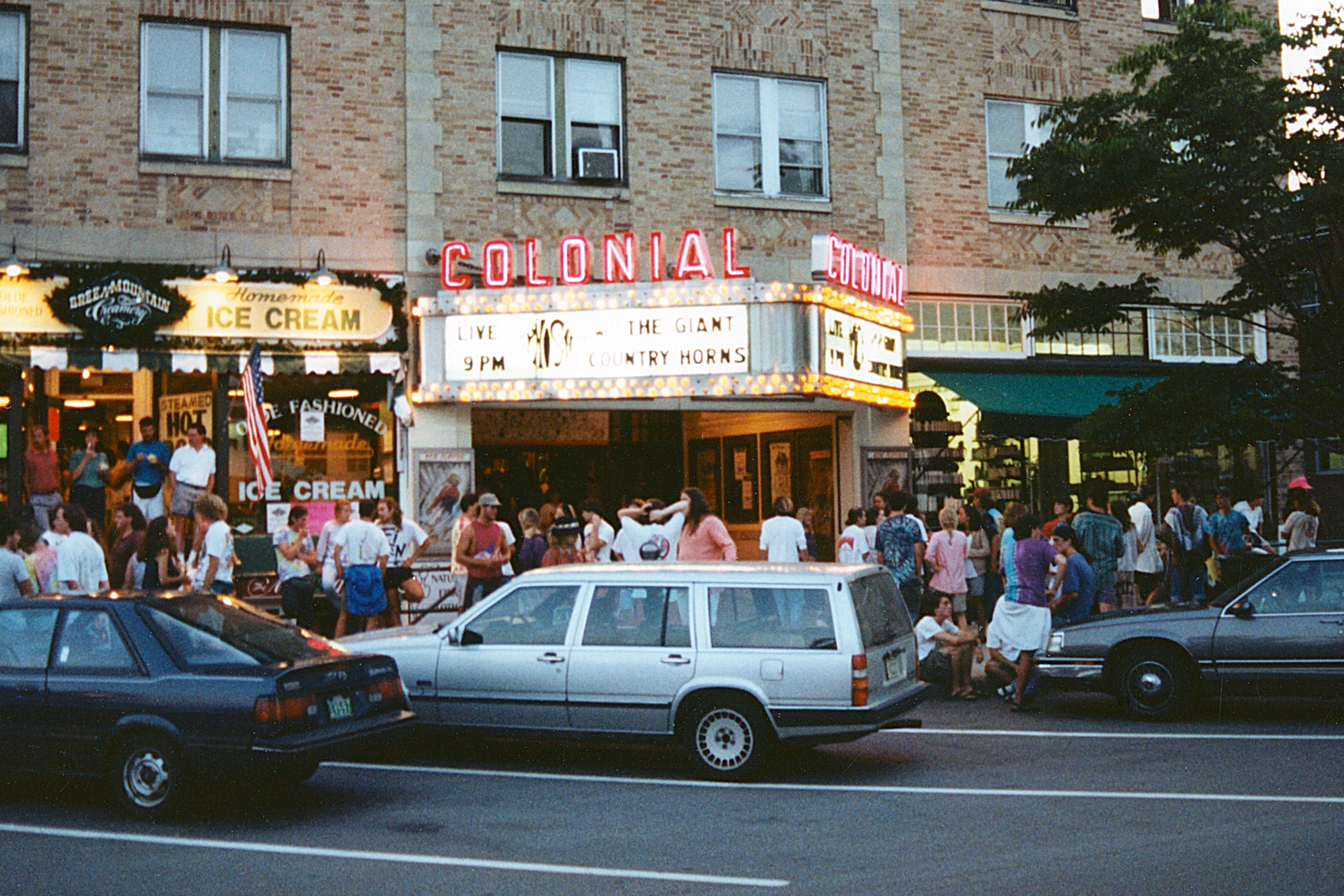History of the Organization
The Colonial Theatre prior to renovations in 2021/2022
ORIGINS
The Colonial Theatre opened its doors in 1924 as a grand, state-of-the-art performing arts facility. Superbly constructed, beautifully decorated, and with wonderful acoustics, The Colonial hosted live performances, film, opera, theatre and vaudeville – exciting large audiences from Keene and beyond.
THE DARK YEARS
The growing popularity of television in the 1940s brought on the rapid decline of vaudeville. By 1945 The Colonial Theatre discontinued live entertainment, and in the 1950s a permanently fixed screen was installed exclusively for film, which prohibited the use of the stage for live performances. In 1984 the Theatre was purchased by Steve Levin and Ira Gavin who brought back live entertainment. But the theatre continued to fall into disrepair.
A NONPROFIT IS BORN
In 1992 a group of community leaders, artists and business people in Keene began discussing the potential restoration of The Colonial and converting it to a non-profit community performing arts center. In late 1993 the non-profit arts organization The Colonial Theatre Group acquired the theatre and began a campaign to renovate the landmark venue. The Keene community rallied around its beloved theatre, raising $2.5 million for renovations.
THE RESULTS
The Colonial Theatre became the Monadnock Region’s preeminent performing arts center and niche film venue, and a key component in the economic engine of downtown Keene and the surrounding area.
- The Colonial Theatre was named to the New Hampshire State Register of Historic Places in 2004.
- Annually, more than 50,000 patrons enjoy performances ranging from international touring productions to The MET: Live in HD, to locally produced performances.
- Our Student Matinee Series engages more than 8,000 students and their educators from over 70 area schools to experience a variety of programs and workshops.
- Local arts organizations and other nonprofits use The Colonial’s production resources and rely on the theatre as their performance home and fundraising venue, enhancing the cultural and creative spirit of the Monadnock Region.
- The Colonial’s Film Series draws patrons of all ages and from all walks of life encouraging ideas, social commentary and dialogue. It is the community’s opportunity to see first-run independent films on the big screen.
Timeline
1923: Construction begins under the direction of architects Harold Mason and Steven Haynes of Keene and Fitchburg and builder Glenroy Scott of Winchester. The Colonial is built on the site of the former Colonial Inn, originally a house built in about 1793 by lawyer Peleg Sprague, the first Keene resident elected to the U.S. Congress (elected in 1797 and 1799).
1924: January 29, The Colonial Theatre, “New England’s most modern and perfectly appointed theater,” opens with the silent film The Hunchback of Notre Dame. Owner Charles Baldwin gives away 6,000 free tickets.
1925: Theater purchased by the Demetrious P. Latchis, who guided the Colonial to commercial success during the 1920s and 1930s.
1928-1932: The Colonial originally featured both motion-picture entertainment and vaudeville performances. It also played host to such luminaries as Metropolitan Opera star Rosa Ponselle (who sang four encores); author Thornton Wilder, reading from “The Women of Argos”; Maude Adams, performing Shakespeare’s “Twelfth Night”; and Amelia Earhart lecturing on the possibilities of cross-Atlantic flight.
1944: Iconic neon marquee installed, in use to this day
1945: live entertainment discontinued.
1950s: permanent Cinemascope screen installed.
1953: seats replaced.
1954: Orchestra pit filled in; a larger screen is added to accommodate Cinemascope; and the wooden floor downstairs is replaced with cement.
1984 –1993: The Colonial Theatre purchased and operated by Steve Levin & Ira Gavin. Live entertainment returns with performances by artists such as B.B. King, John Prine, Bonnie Raitt and Emmylou Harris.
1991: local citizens explore non-profit status for the theater.
1993: The Colonial Theatre Group, Inc. is formed as a nonprofit corporation and purchases The Colonial Theatre.
1994: Phase I restoration begins with help from Keene Economic Development and Revitalization Corporation.
1995: Keene Lions Club presents “My Fair Lady,” the first live theatre performance on restored stage in 50 years.
1997: Restoration of interior complete; seats replaced.
1999: Keene Mayor recognizes the Colonial as an historic landmark in downtown Keene.
1999: Marquee restored.
2004: Theatre named to the N.H. Register of Historic Places.
2007: Aging main doors and clerestory windows replaced with renewably sourced, locally crafted, historically accurate doors and windows.
2019: The process begins to undergo a major renovation and rebrand as The Colonial Performing Arts Center.
2020: COVID-19 closes the doors of The Colonial Theatre in March. The building at 20 Commercial Street is purchased and renovations begin to create a second smaller venue (SHOWROOM).
2021: The Colonial Performing Arts Center announces a 12.5 million dollar capital campaign. SHOWROOM is completed and begins operations. Renovations begin on the historic theatre.
2022: The newly renovated historic theatre opens to the public in April.
“The Sentinel carried a full description of the building shortly before it opened. It was estimated that 135,000 pieces of 12-inch tile and more than 250,000 bricks were used in the construction that featured steel-reinforced walls and 10,000 square feet of concrete floors.
More than 200 barrels of plaster of Paris were used in the rich decoration and ornamental work of the auditorium, which was finished in an Italian Renaissance style, its walls in a rich golden silk brocade with decorative sconces and an artistic frieze. At each side of the impressive stage — 30 by 71 by 55 feet, and equipped with every modern theatrical convenience and dressing rooms — were marble columns, French doors and grills. A large chandelier and four smaller ones hung from the ceiling.
All of the 1,036 leather-covered spring seats were filled at the opening.” – David Proper 2004







